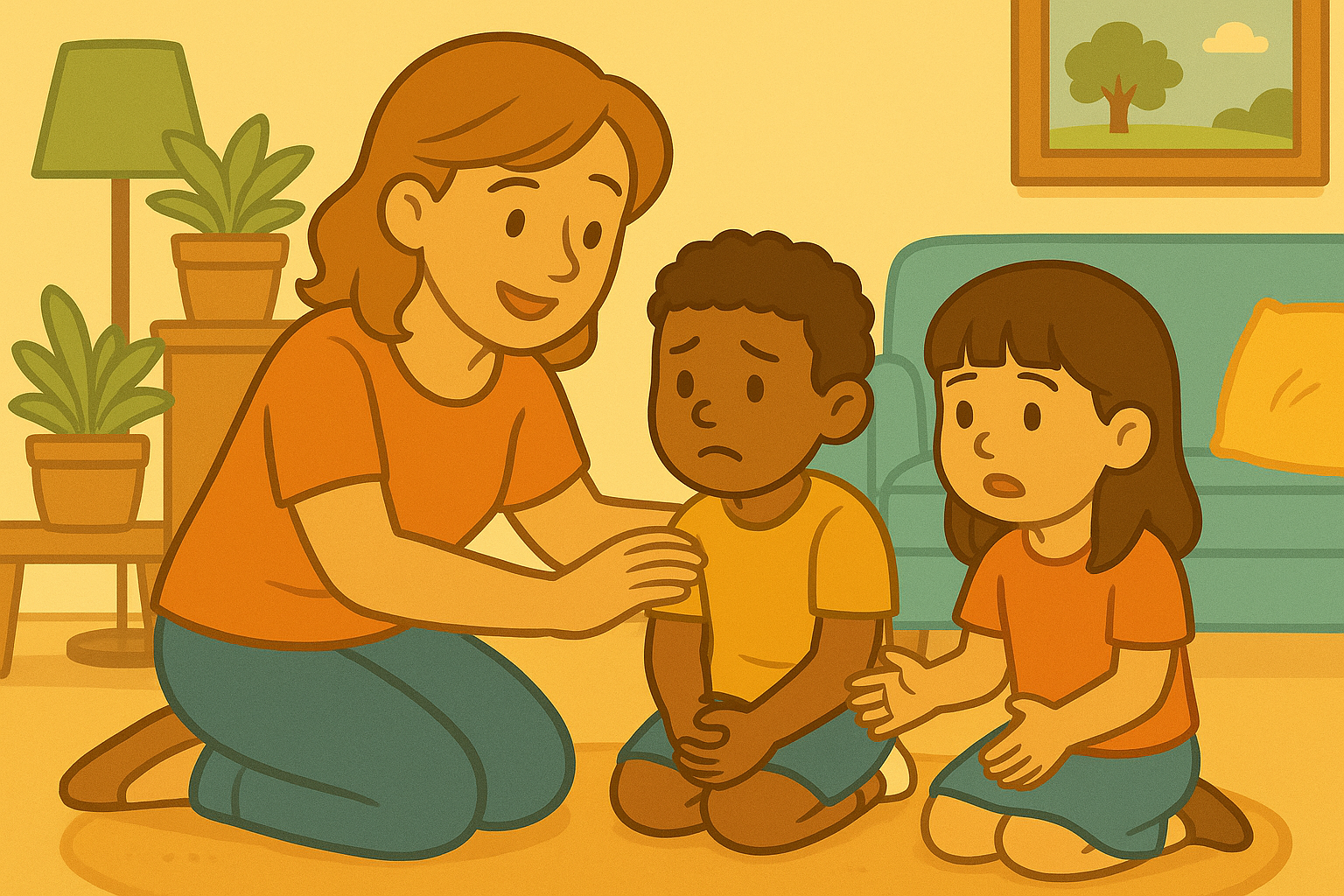Encouraging Empathy After Conflict
Encouraging Empathy After Conflict
Why Empathy Is the Heart of Healing
After a conflict — whether it’s sibling arguments, playground fights, or tension with parents — the most powerful lesson a child can learn isn’t about who was right or wrong. It’s about empathy.
Empathy helps children repair relationships, understand perspectives, and grow emotionally. It teaches them that even when feelings get big, connection can always return.
Parents play the key role in guiding this recovery process. Instead of focusing only on correction, you can help your child understand how others feel — turning every conflict into a chance for growth.
The Difference Between Apologies and Empathy
Many children learn to say “I’m sorry” without really meaning it. While manners are important, empathy goes deeper. It’s not just about saying the right words — it’s about feeling the impact of one’s actions.
True empathy involves noticing someone else’s emotions and caring about how your choices affect them.
Helping kids build this understanding after conflict transforms “forced apologies” into genuine compassion — the kind that strengthens character and relationships alike.
This echoes the ideas in How to Build Trust After a Conflict, where repair becomes the foundation of emotional safety and connection.
Calming Comes Before Compassion
A child can’t access empathy while their nervous system is still in fight-or-flight mode. After conflict, the first step is helping everyone calm down before talking about what happened.
Encourage quiet time, deep breaths, or a short walk. Model calm by speaking softly and keeping your body relaxed.
Once your child feels safe and regulated, they can begin to think about others’ feelings. Emotional recovery must come before emotional reasoning — otherwise, the lesson won’t stick.
This process connects closely to Helping Kids Recover From Big Emotions, where regulation is the bridge between chaos and understanding.
Using Reflection Instead of Lectures
After calm has returned, avoid jumping straight into explanations or punishments. Instead, invite reflection. Ask open-ended questions like:
“What do you think your friend felt when that happened?”
“How would you feel if someone did that to you?”
“What could we do to make it right?”
These questions invite curiosity rather than defensiveness. They encourage children to step outside their own emotions and into someone else’s experience.
Reflection fosters empathy far more effectively than lectures ever could.
Modeling Empathy in the Moment
Children learn empathy not from what we say, but from what we show. When your child is upset or frustrated, respond with understanding instead of judgment.
Say, “You’re angry because you wanted that toy,” or “You felt left out — that must have hurt.”
When kids consistently experience empathy, they naturally begin to offer it to others.
This mirrors the principle in The Role of Connection in Preventing Misbehavior, where emotional attunement helps children feel seen and understood — the very feelings that make empathy possible.
Helping Kids See Emotions in Others
You can strengthen empathy by helping children recognize emotional cues in everyday life. Point out body language and facial expressions during books, shows, or real-life situations:
“She looks disappointed — what do you think happened?”
“That boy’s face looks worried. What might make someone feel that way?”
This kind of emotional noticing builds awareness. The more kids learn to identify emotions in others, the easier it becomes to connect feelings with actions.
Teaching Repair Through Action
Empathy isn’t complete until it leads to action. Once your child understands how someone else felt, help them brainstorm ways to make things right.
That might mean saying sorry, drawing a card, helping rebuild something broken, or simply offering kindness next time.
Teaching repair helps kids connect emotion to responsibility — not through guilt, but through care.
It ties beautifully into Teaching Consequences Without Guilt, where children learn accountability in ways that strengthen relationships rather than damage them.
Turning Sibling Conflicts Into Empathy Lessons
Sibling fights are perfect empathy-training moments. After tempers cool, guide each child to describe how they felt and listen to the other.
Encourage them to reflect: “When you grabbed the toy, your sister felt sad because she wasn’t done yet.” Then help them find solutions together.
These small, repeated moments of guided empathy teach kids that relationships can repair — and that kindness is a team effort.
Encouraging Empathy Beyond Home
Empathy grows stronger when children practice it in wider contexts — at school, on the playground, or in the community.
When you see your child notice someone struggling or left out, celebrate that awareness: “I saw how you helped your friend — that was really thoughtful.”
The more children connect empathy to real-world actions, the more it becomes a natural reflex rather than a forced behavior.
When Empathy Doesn’t Happen Right Away
Some children — especially when tired, stressed, or young — may struggle to express empathy consistently. That’s normal.
Don’t demand empathy in the heat of the moment; nurture it over time. Keep modeling it, naming it, and celebrating it when it appears.
Like any other emotional skill, empathy grows through experience and safety, not through pressure or guilt.
When children feel secure, their natural compassion unfolds.
Every moment after conflict is an opportunity — not just to discipline, but to deepen understanding.
By guiding your child to reflect, repair, and reconnect, you’re shaping more than behavior — you’re shaping character.
Empathy turns conflict from something to avoid into something that heals. It reminds children that even after hurt feelings or mistakes, love and connection can return stronger than before.
Because empathy doesn’t just end conflict — it transforms it into compassion.
This content is for educational purposes and is not a substitute for professional medical or psychological advice.
Popular Parenting Articles


